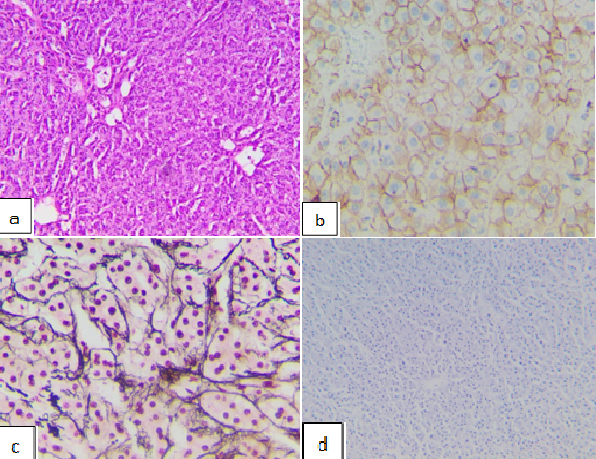Hepatocellular adenoma in a child: a case report
DOI:
https://doi.org/10.15419/bmrat.v10i7.816Keywords:
Hepatocellular adenoma, HCA, AFPAbstract
Introduction: Hepatocellular adenoma (HCA) is a rare noninvasive adenoma of the liver, occasionally observed in childbearing-aged women who use contraceptive pills (85% of which contain steroids) and is infrequent in children. HCA can cause several complications such as hemorrhage (20?25%) or proceed to malignancy (4?10%), especially when the tumor size is greater than 5 cm. The clinical manifestation of HCA is variable, from asymptomatic to tumor rupture. Most cases admitted to hospitals are due to mild atypical abdominal discomfort. HCA is classified into four types, based on molecular behavior, HNF-1a inactive, b -catenin activated, inflammatory HCA, and unclassified HCA. Among them, the b -catenin activated subgroup carries the highest risk of hemorrhage and malignant transformation.
Case presentation: We report a 16-year-old boy who presented with right upper quadrant pain. Abdominopelvic computed tomography revealed a large hepatocellular adenoma located in lobules V, VI, VII and VIII, with normal laboratory tests. A neovascularized liver tumor, 18x20x22 cm in size, situated in lobules V, VI, VII, and VIII was detected and removed surgically. Immunopathology results indicated a b -catenin activated hepatocellular adenoma.
Conclusion: HCA is a very rare noninvasive adenoma in children. The b -catenin activated subgroup comprises 15? 20% of HCA cases, and is related to male hormone exposure. Surgical resection is typically recommended due to their high tendency to hemorrhage or become malignant. This case is exceptionally rare and can be challenging to diagnose.

Published
Issue
Section
License
Copyright The Author(s) 2017. This article is published with open access by BioMedPress. This article is distributed under the terms of the Creative Commons Attribution License (CC-BY 4.0) which permits any use, distribution, and reproduction in any medium, provided the original author(s) and the source are credited.
